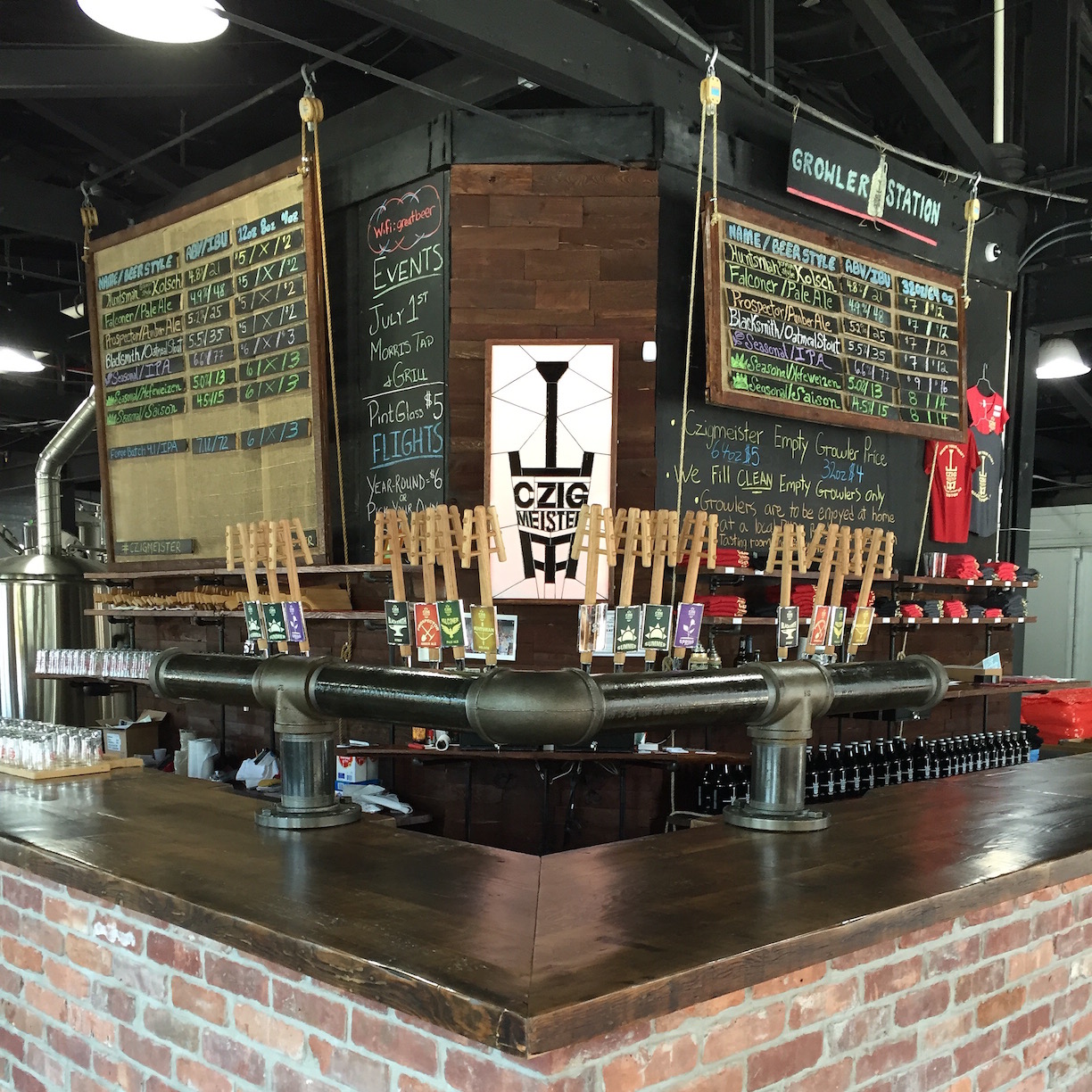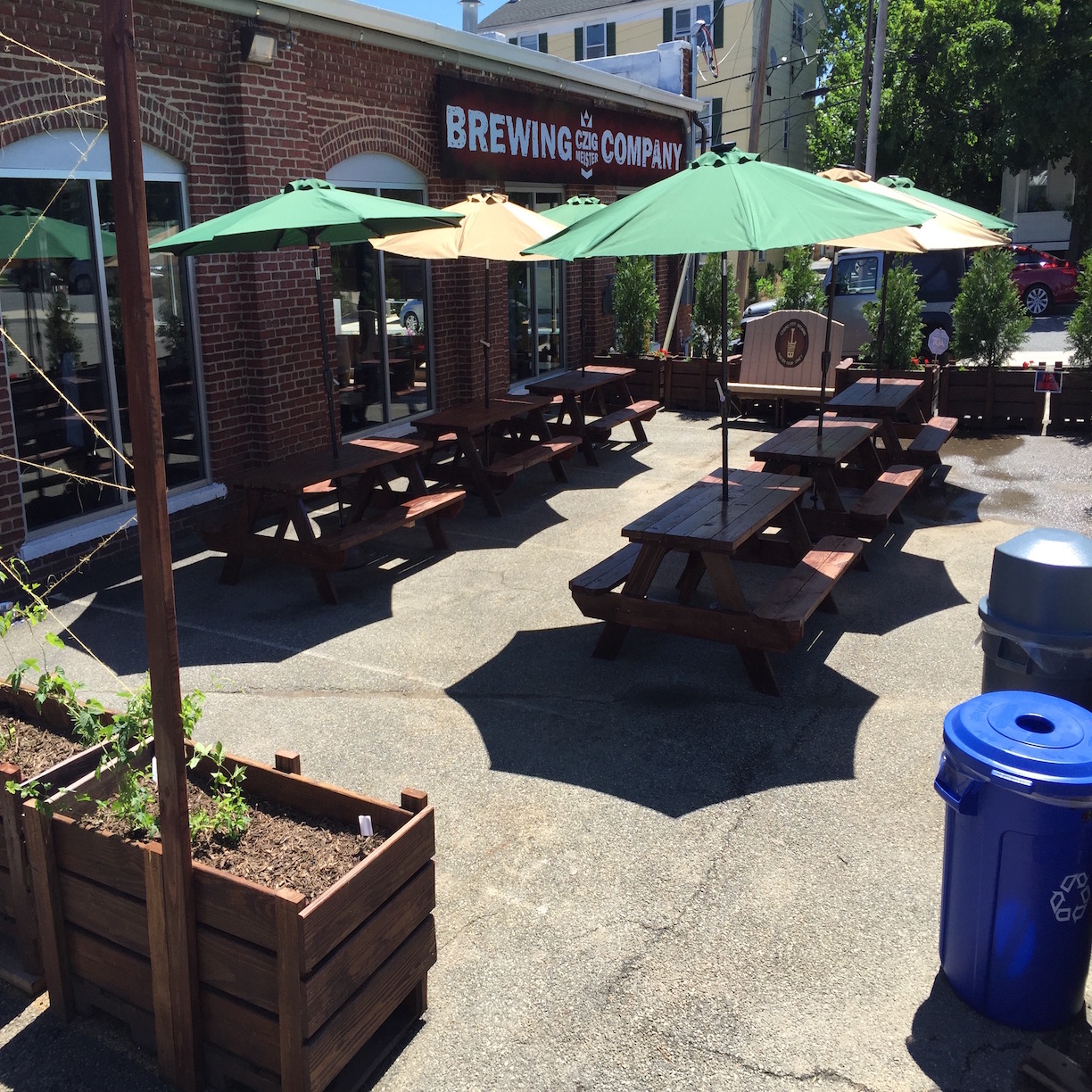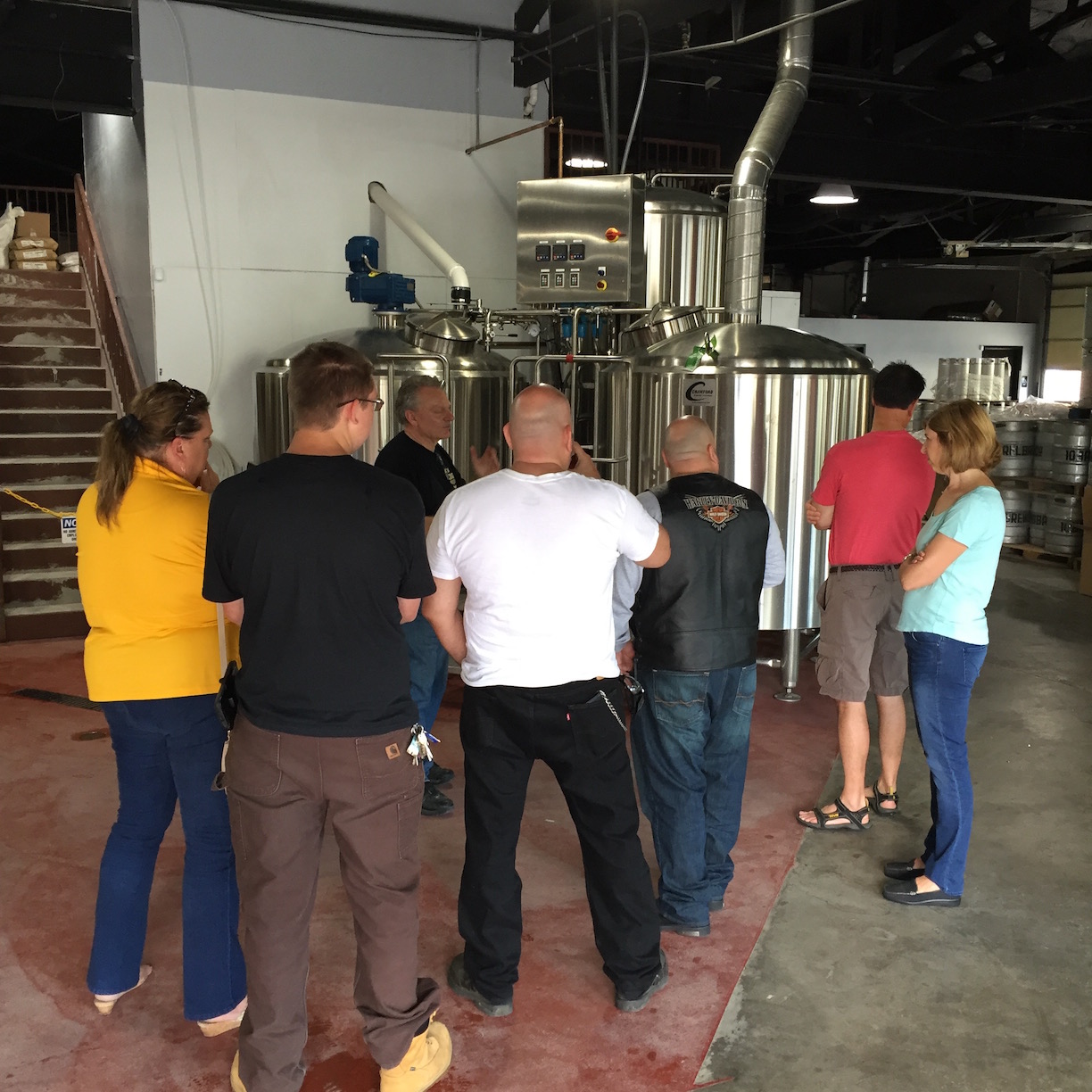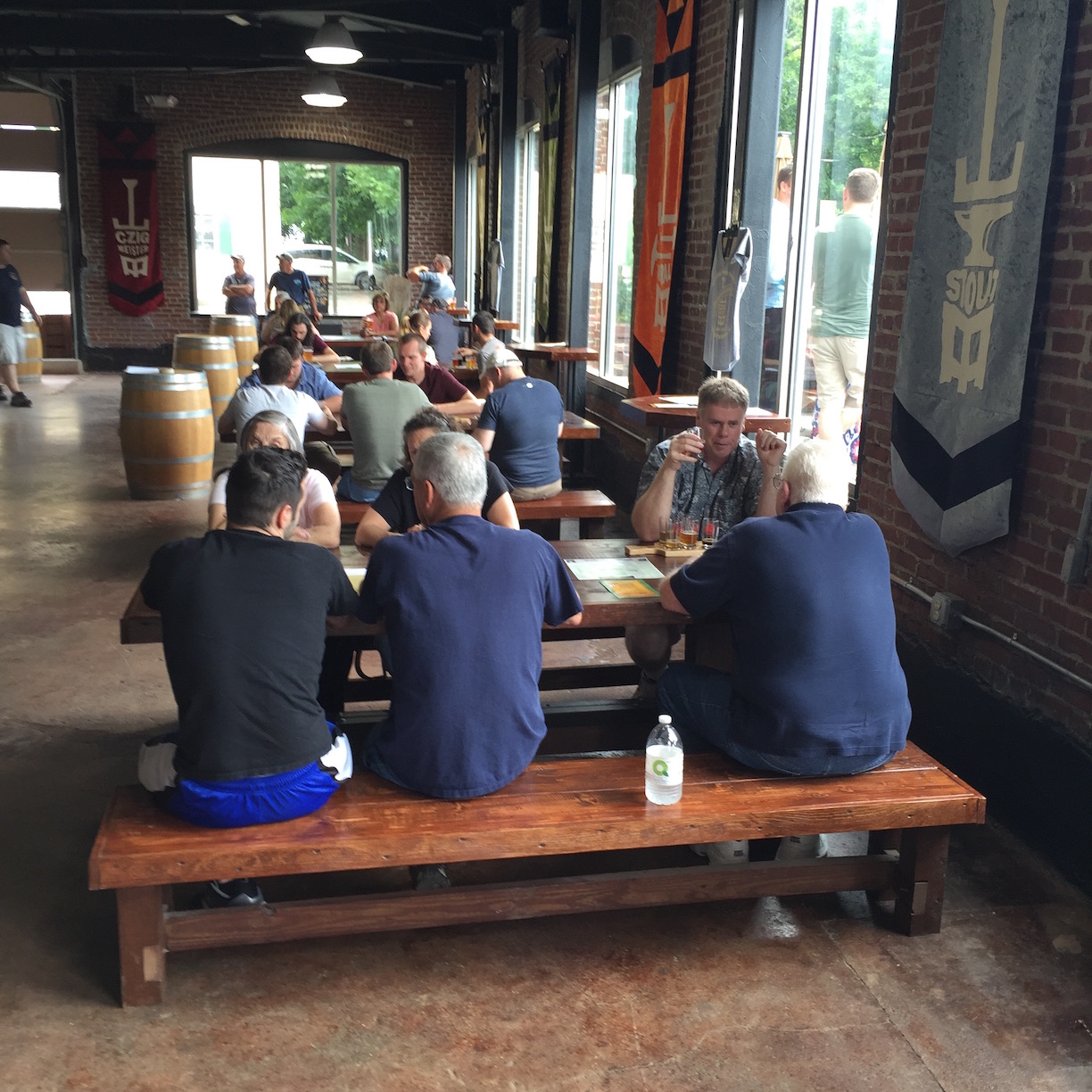Tasting Room

Our spacious old-world style tasting room has a wide-open feel with full view of the brewery equipment floor where all the brewing happens. The tasting room has community seating to give you that German Beer Hall feeling. We also have standing tables and barrels, great for putting your beer down and mingling. The bar and all the furniture in the tasting room was designed and hand built by us, our family and friends. In our design, we re-purposed as much of the existing black-iron piping, red bricks and wood planks that were original to the building as possible to keep the original feel of our 1920s-era building.
While remodeling the building, we even hand scraped the paint off the tasting room walls to expose the charm of the old red bricks. To match that look and feel, we had the bar top made out of 150-year-old reclaimed NJ barn wood and the bricks that adorn the bar were salvaged from the similar era “Bergen Tool” factory building that was recently demolished across the street to build a new CVS store and planned town house development. Even the foot-rail of our bar was made from re-purposed compressed air piping that we disassembled when remodeling our building. The tasting room walls are decorated with homemade banners that display the logo of each of our core beers.
Biergarten

While visiting, take time to step out into our beautiful Biergarten patio where you can take your beer outside and enjoy a beautiful day.
Best of all, don’t forget to take a guided tour of the brewery as you contemplate which beers you’d like to sample – awareness of how our beers are made and a discussion about the styles of beer make the experience quite special. We offer group tours on every hour and as needed to accommodate all our guests. You may also stroll through the guest-accessible areas of the brewery and give yourself a self-guided tour to see the process that goes into getting that beer in your glass!
Please note that we do not have a kitchen and do not serve food. If you wish to have some food with your beer selection, feel free to bring your own food, whether from home, take-out or order-in from one of the amazing Hackettstown restaurants. Our goal is to offer an old-world style relaxing and friendly atmosphere where you can sample, learn about, and enjoy your choice selection of our fine beers.
Process

The brewing process starts at the grist mill. The mill is used to crush the grain for efficient sugar conversion in the mash tun and to remove the outer husk for use as a filter bed in the lautering process. The milled product is then added to the mash tun through a hydrator to uniformly heat and hydrate the mash to the temperature desired. The mash tun is a “jacketed” vessel, meaning it has a double wall that can be used to heat the mash tun with steam if it is required in the recipe, as well as a layer of insulation to aid in heat retention. A top door in the vessel allows for manual mixing and mineral additions, while a side manway allows for easy removal of spent grains. This mash tun is a combination mash/lauter tun, which means both mashing (grain steeping to extract sugars) and lautering (mash filtration to remove wort) from the grain happens in one vessel. The filtration is accomplished by the use of a false bottom installed into the mash tun. The false bottom is a stainless steel plate with slits cut into it for drainage of wort but retention of grain.
When the mash is done lautering, the wort is removed from the mash tun and sent to the kettle. In the kettle, the wort is heated to boiling for sterilization, evaporation of volatile compounds, removal of hot break (protein-tannin complexes) and addition of hops. The length of the boil depends on the individual recipe, but generally is between 60 to 90 minutes. The hops are added at different times in the boil to impart different flavors in the final product. The longer the time in the boil (45 to 90 minutes) the more bitterness with be extracted; the shorter time in the boil, the more hop flavor (15 to 30 minutes), or aroma (1 to 10 minutes) is extracted. This kettle is a combination kettle/whirlpool, which means both boiling and whirlpooling (the production of a whirlpool to condense solids into a cone at the bottom of the vessel) are preformed in one vessel. The whirlpool is created by stopping the boil and pulling off the wort from the side bottom valves and recirculating it back into the kettle through a side middle valve tangentially to create the vortex.

After the whirlpooling has finished and the contents of the kettle have settled, the wort is then drawn off the same side bottom valve, through a heat exchanger to be cooled down and sent over to a fermentation vessel. The hot water created by the heat exchanger is stored and used for the next brew. The wort in the fermentation vessel is now around 70 degrees Fahrenheit (optimal temperature to start fermentation) and the fermentation is allowed to start. Yeast can be added to the wort at two times after the heat exchanger depending on the type of yeast used (dry or liquid). Liquid yeast can be added in line (into the wort as it is being transferred to the fermentation vessel) or directly into the fermentation vessel after the wort has been transferred. The later is possible for both liquid and dry yeast.
Fermentation temperature is regulated because when yeasts ferment they produce heat, and increasing temperatures in fermentation can produce off flavors. This temperature regulation is performed by a glycol chilling system. The system circulates chilled propylene glycol through the jacketed fermentation vessel the same way heat is transferred in the jacketed mash tun and kettle. We monitor the temperature inside the fermentation vessel by use of a thermostat, and regulate both the circulation as well as the chilling process in order to keep the fermentation temperate constant within a few degrees.
The fermentation process time can vary depending on the beer type and yeast used, but averages about 7 days from start to completion. The beer is then further chilled in the fermentation vessel to settle out all the yeast. This takes about 1 day, but it depends on the size of the tank and the amount of vessels being cooled. Once completed, the beer can be transferred to a storage vessel called the “brite tank” for carbonation and packaging.
